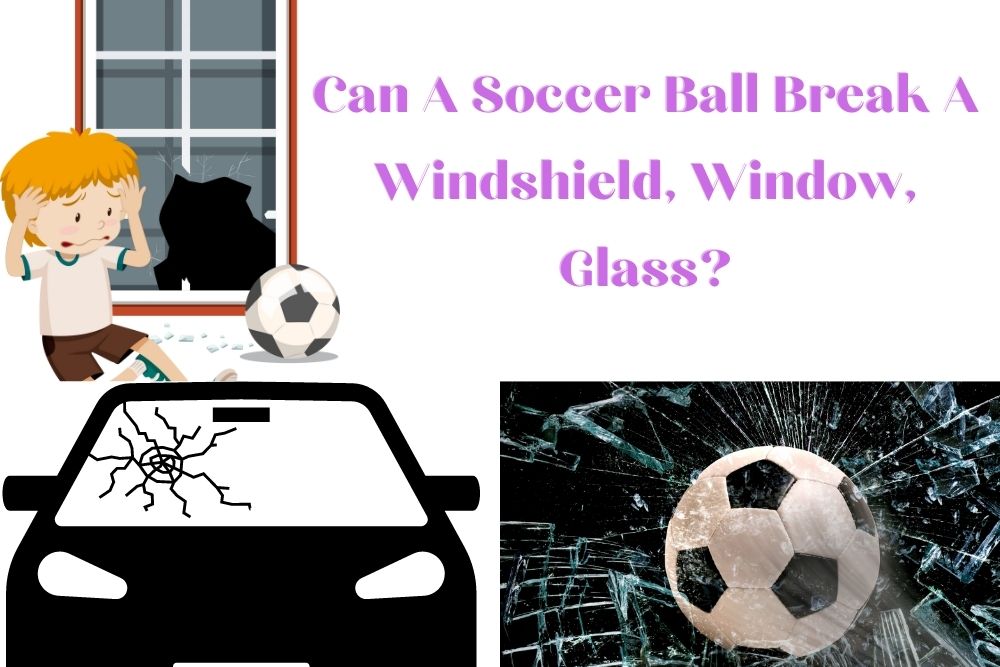Soccer balls weren’t created to be used destructively although accidents and unavoidable human errors can transform them into tools of mass destruction, causing innumerable damage to valuable properties.
The fact that soccer balls can be virtually played anywhere doesn’t make it suitable for all locations. Soccer is best played in fenced soccer fields or stadiums far from residential areas with numerous glass windows.
Playing soccer on street corners is a common hobby among teenagers and children. In some instances, the soccer ball may project out of control into oncoming vehicles, putting them and the drivers at risk.
Most people passionately love soccer but hate it when it is played in the wrong places knowing that soccer balls don’t have minds of their own and can cause as much mayhem as circumstances would physically permit.
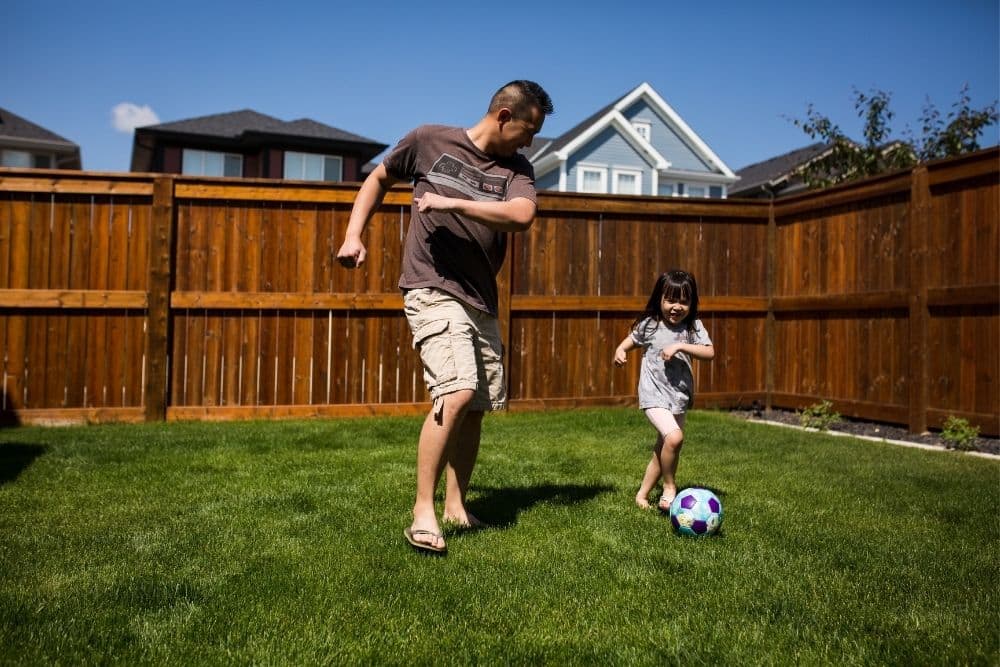
Although soccer balls are made with soft elastic materials puffed with air pressure, they can cause significant damage when traveling at high speed. Nobody attends a soccer event expecting to get their car’s windscreen shattered or its windows wrecked.
When vehicles get struck by fast-moving soccer balls, the extent of the damage they can cause usually depends on the strength of the windshield and windows, the angle from which the ball hits the vehicle, the proximity of the player, and the speed of the ball.
We have seen soccer balls break residential or commercial building windows, but can they break the windshield of a vehicle? You can only find out if you keep on reading.
Quick Navigation
Can a soccer ball break a windshield?
In early automobile designs, cars weren’t designed with windows and windshields. Those areas where the windshield and windows are supposed to be were left open which made them uncomfortable when in motion.
The windshield was invented in the year 1904 after early car owners complained of the difficulty in driving due to debris and strong winds.
Early windshields were produced with glasses that shattered into many fragments upon slight impact—causing severe injuries to drivers and other car occupants. Early windshields were replaced with tempered glass which was harder and stronger than its predecessor.
Until the mid-century, before the popularity of multi-layered laminated glasses, tempered glasses were the norm. Laminated glasses are manufactured by firmly bonding two layers of glass with a sheet of vinyl between them.
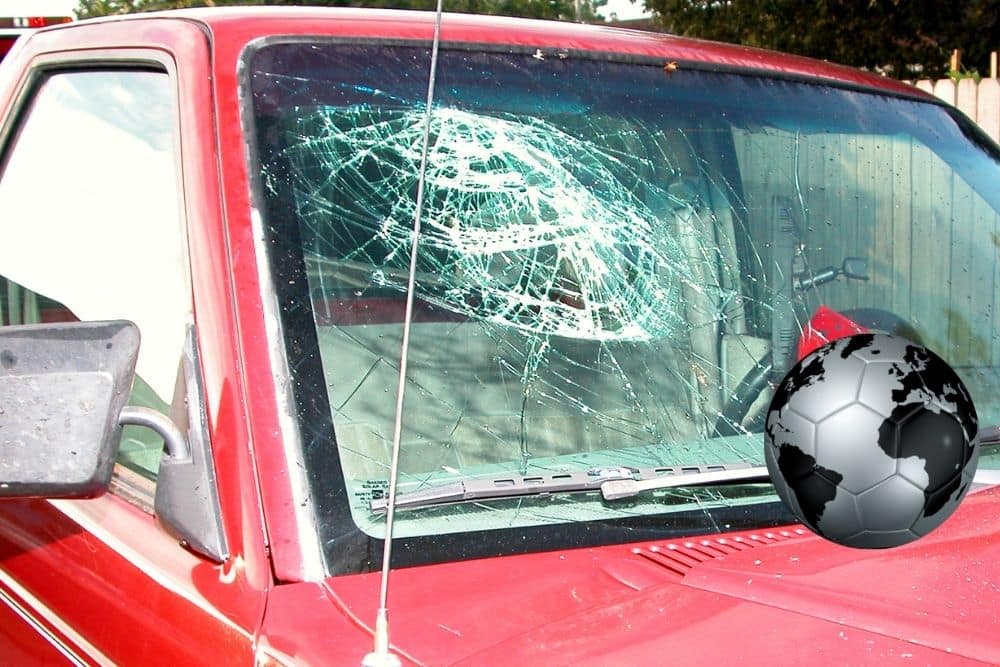
Due to the windshield vinyl center lining, the glass can break but wouldn’t shoot out in shards into different directions when hit by projectiles like stones and soccer balls.
Laminated glasses are hard and difficult to break with a single blow if a projectile isn’t traveling at a very high speed—and not everyone can shoot a soccer ball to move at that speed. Air is sandwiched between the two layers of glass with the vinyl material and it acts as a shock absorber during impacts.
A soccer ball traveling at a speed of about 211 km/h (132 mph), the fastest soccer ball speed on record, can force a large area of the windshield to spider out or get a large crack depending on the angle of impact.
Due to the weight of a soccer ball and how fast it can be possibly kicked by a soccer player, the chances of a soccer ball penetrating a windshield are minimal and likely impossible—except soccer balls become heavier in the future.
A soccer ball moving at a speed of 211 km/h would shatter other glasses on a motor vehicle into bits and pieces because they are tempered glasses. The windshield is made with laminated glass because it stands a higher risk of getting damaged.
Today, some vehicles have all their windows made of laminated glass reducing the chance that a soccer ball at the highest recorded speed can break them. Nevertheless, if the car’s windshield already had a crack, a soccer ball can escalate the level of damage.
Little cracks or chips on a windshield can expand very quickly due to wind pressure exerted on the vehicle as it accelerates. This can obstruct the driver’s view which poses a threat to other road users.
Soccer-related windshield damages can easily escalate into brawls and quarrels if not properly handled. In some instances, the fault and responsibility of fixing the damage fall on the entire squad playing the ball at the time of the accident. At other times, the player who played the wayward shot is held accountable.
Sometimes, even the driver of the damaged vehicle can be held responsible especially in situations where visible warning signs clearly state the possible implications of driving or parking vehicles at such locations.
To amicably settle this kind of issue especially in situations where both parties involved are enraged, a legal practitioner should be involved to properly dissect the matter and provide possible legal resolutions.
Can a soccer ball break glass?
Broken glasses are very common in homes, especially in homes where kids are allowed to play indoors with soccer balls without the watchful eyes of adults.
Even if the soccer ball doesn’t break the glass directly, they can knock them down from the table or shelve causing them to shatter upon impact with a hard floor.
Glass cups, wine bottles, and mirrors are the most common glasswares susceptible to breakage due to their brittle nature. Glasses differ in behavior and chemical composition based on how they are produced.
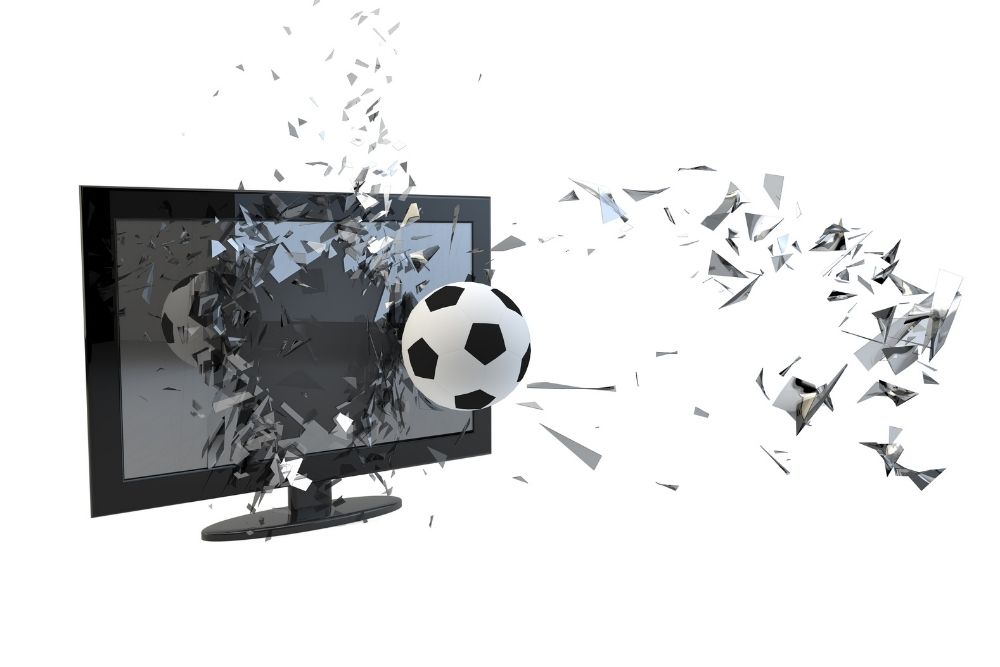
We will be looking at five types of glasses commonly found in homes that can be easily broken by soccer balls on impact.
- Special Glass: Special glasses are manufactured using a unique scientific procedure. Their chemical composition can either be the same or different based on what they will be used for.
Due to their fragile nature, they can easily get cracked or broken by soccer balls. Some examples of special glasses include TV screens, light bulbs, glass ceramics, and lenses.
- Borosilicate Glass: Borosilicate glasses contain 70%-80% processed sand with little percentages of other chemical substances. Although borosilicate glasses are highly resistant to heat changes and chemical corrosion, they are delicate and damaged by soccer balls.
Borosilicate glasses are used in producing heat-resistant kitchenware, baking utensils, lamp cover, and bottled pharmaceuticals.
- Crystal Glass: Crystal glasses have a high reflective index and look very attractive when processed. They are composed of 54-65 percent sand, 13-15 percent alkali oxide, and many other important oxides.
Crystal glasses are mostly used in manufacturing decorative ornaments, ashtrays, glass bowls, glass vases, and drinking glasses. They can be broken by soccer balls traveling at a speed as little as 30 km/h.
- Soda-Lime Glass: Soda-lime glasses are the most common kind of glasses in circulation all over the world. They are not only produced with sand and other oxides, lime and soda are also added during their manufacturing process.
Soda-lime glasses are smooth, light-weighted, and fine-pored. Aside from being fragile and easily broken by soccer balls, they are not completely heat resistant and can burst when hot substances are poured into them.
Products manufactured using soda-lime glasses include sheet glasses, simple drinking glasses, beer bottles, wine bottles, and food jars.
- Tempered Glass: Tempered glasses can be found in cars and homes. They are produced by heating a well-cut annealed glass to over 600 degrees Celsius and rapidly cooling it using high-pressured air blasts.
The composition of the glass is transformed by its intense heating and rapid cooling. Tempered glasses are stronger than other mentioned glasses but they can also be broken by soccer balls traveling at a high speed.
When tempered glass breaks, it usually looks like smooth pebbles instead of sharp particles.
Can a soccer ball break a window?
There is always a high tendency of destruction to valuable properties when teenagers or children are allowed to play soccer in densely populated residential areas.
You may have seen it in movies where soccer balls break a glass and the owner comes out yelling. But, can soccer balls break windows or are those part of scripts to make a movie more interesting?
Factors that determine if a window will be broken by a soccer ball’s strike
- Angle of Impact: The angle of impact of a soccer ball on a window is sometimes overlooked although it is an important factor that will determine if the window will break or not upon impact.
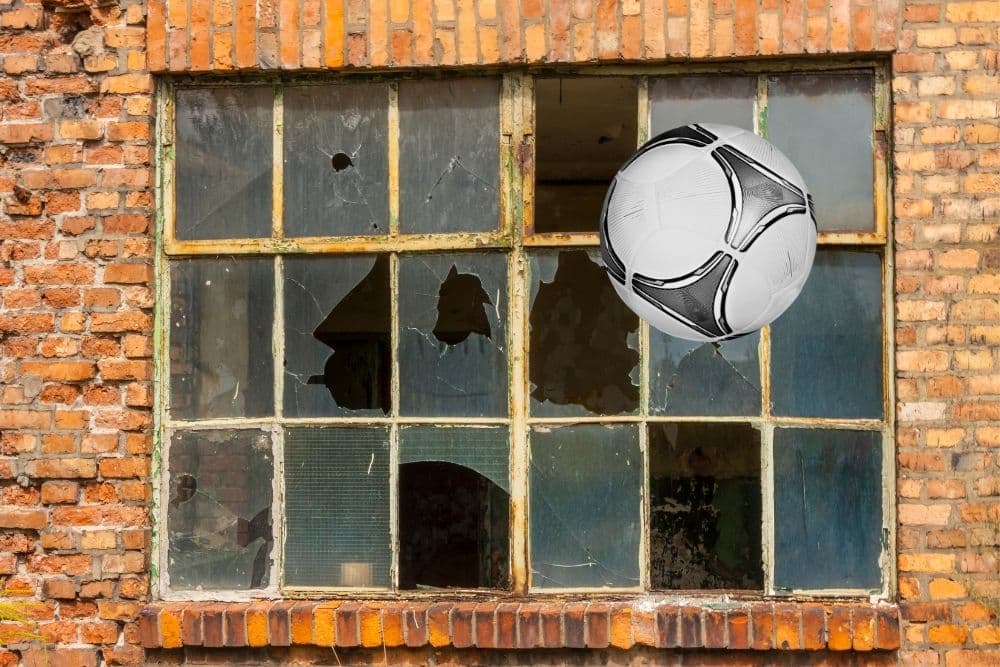
When a soccer ball is projected at a 90-degree anterior angle, it will produce more effect on the window than when the ball is projected at a 45 to 50 degrees anterior angle.
Striking windows from a longer range will produce less effect on contact because soccer balls are spherical without jagged or sharp corners.
The spherical nature of a soccer ball will make it skid off instead of breaking through a glass window upon impact when the angle of impact is not at 90 degrees.
- The Kicking Proximity: Increasing the distance between a soccer ball and a target object will directly reduce the impact of the soccer ball on the target object.
In easier terms, the further away you are located when kicking a ball on a glass window, the less damage the ball will do to the window. When a soccer ball is aimed at a glass window from close proximity, the chances of the window shattering are higher.
This is because when a soccer ball is kicked, it encounters air pressure and gravity on the projection which gradually reduces its speed until it finally comes to a halt.
- Layers of Windowpane and Coating: All windows are not the same, some have more layers of glass and glass coatings than others.
Windows with multiple layers of glass and glass coating are more durable and force-resistant than windows with fewer layers of windowpane and coating. This also enables windows to sit firmly on window frames.
A soccer ball will shatter or crack a window glass with 3 millimeters thickness easier than that of 7 millimeters thickness.
Conclusion
Soccer balls can break a lot of things as long as conditions are favorable. After reading through this article, you wouldn’t be in denial any longer of the fact that soccer balls can cause a lot of damage to windshields, windows, and glasses.
Even though soccer brings joy to billions of soccer fans around the world, it is obvious that it can also cause losses and damage to valuable properties when played in the wrong environment.
Therefore, it is important to exercise caution and only play soccer in open fields, far away from breakable objects.
Hi there, I’m Jay.
Soccer is everything in my life! My friends and I have created this blog with all our enthusiasm, passion, and understanding after years of playing pro soccer. Hope you will enjoy it!
